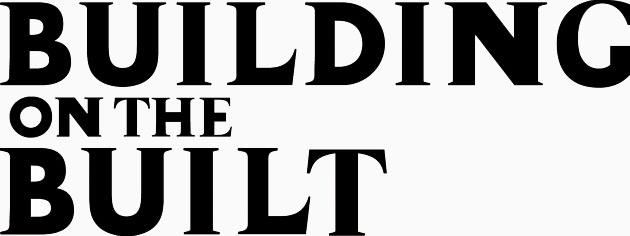Site Specific: De Linde
Ono Architectuur - Tervuren, Belgium, 2023 - ongoing
Antwerp-based Ono Architectuur are proposing that the pre-cast panels on the facade of this building will be re-hung over a new layer of external insulation, like a favourite suit adjusted to accommodate an expanded waistline. The consequent gaps between the panels, which now have to cover more external area, are infilled with tiles in a manner reminiscent of the Japanese ‘kintsugi’ repair technique.
The adjustment is made possible by the robustness of the original concrete panels; the energetic debit of which could be said to be somewhat off-set by their ability to be reused decades after they were originally installed.
There is both a subtlety and a straightforwardnesss to this proposal which exemplifies the way that the tectonic tolerance required to interlock ‘the new with the old’, can be made visible and celebrated. New thresholds, at the scale of balconies, pergolas and entrances, also echo the way in which this ‘space of repair’ is potentially the site for generosity and an enhanced civic spatialty.
This project features in an essay written by members of Ono Architectuur which was included in the ‘Demolitions and Deconstructions’ issue of the Practice in Research Journal. You can download a copy of PiR #5 here.
OA Residential project De Linde is located in Tervuren, a green commune east of Brussels. The building, designed in 1975 by E. Vanden Plas in collaboration with M. Vierin, is a fine example of brutalism. The 8-story volume is a solitary among the smaller-scale surrounding buildings and dominates the sports field in front. The 50 social housing units, with a groundfloor with storages and a practice room, are built on top of an underground parking garage hidden under the garden with relief. At the rear, elevators and stairs sit in a separate vertical tower volume, connected by galleries to the apartments.
The concrete construction and precast facade elements define the architecture. Prefabricated panels, with flat and ribbed surfaces, are stacked alternately, resulting in a strong graphic. From afar, a horizontal lining dominates with continuous band strips sitting all around the building. Up close, a robust stacking and expressive assembly of façade elements becomes visible. When built, the 1970s structure was not insulated, and the floor heights and floor areas are somewhat limited.
The design for the renovation of this brutalist residential building is characterized by a radical reuse of materials. The precast concrete panels are disassembled and stored on site. After insulating the building, the panels are put back in place. The added insulation makes the building a bit bigger. The resulting gaps are the reason for a locally different cladding. Striped black and white elements are inserted as traces of change and intertwine with the graphic character of the facade. The physical action is on display.
At first glance, the new hardly differs from the existing. The attention shifts from a material intervention to the action itself. We refer to the work “Faith Moves Mountains” by Francis Alÿs: “Sometimes making something leads to nothing, sometimes making nothing leads to something.” In De Linde, the necessary action of dismantling and reassembling changes the view of the building, while keeping it largely as it is. The materials undergo only a slight shift. Everything looks the same, yet it is just different. These small changes simultaneously have a big impact on the awareness of material use and the way we still want/can (re)build. Improving energy performance is coupled with maintaining the essence of the original design.
Living quality itself is also enhanced by small but effective modifications. A bayonet-shaped circulation between the entrance and living space threads the rooms and supporting functions together. The indoor enlargement of the terraces sets the dining and seating areas, positioned diagonally around the kitchen. The new infills have circular tectonics with visible and demountable connections. The added (insulation) materials are bio-based.
The design is an invitation for greater collectivity and social cohesion. A wider entrance as a place for meeting is linked to a shared space for activities, neighborly conversation, workshops and bike repair. By strongly connecting it to the outdoor space, the communal garden is made more visible and becomes part of the collectivity.
Project De Linde was selected following the 'Innovative Projects 2024' call by Wonen in Vlaanderen and thus received additional subsidies in support, enabling the project to take a pioneering role in sustainable and future-oriented building.
NOTES
Many thanks to Gert Somers for his help in compiling this post.
For more on ONO Architectuur visit their website here.
Existing site photography by Tom Beysen.
Posted 21st February 2025.



